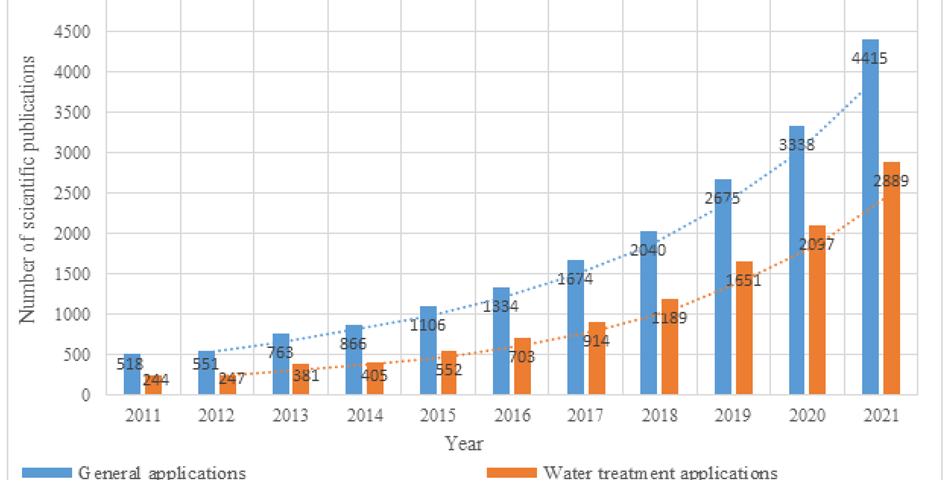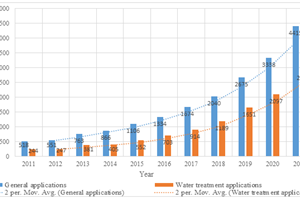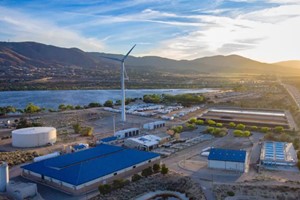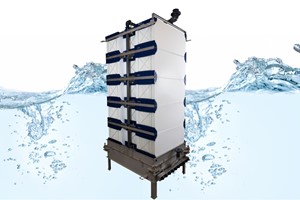Recent Advances in Carbon and Activated Carbon Nanostructured Aerogels Prepared from Agricultural Wastes for Wastewater Treatment Applications
In the last decade, the rising global population, urbanization, and pollution have made clean water a pressing concern. Aerogels, unique porous materials, offer exceptional properties. They have been created from various inorganic and organic substances, often combined with novel compounds for specific uses and enhanced performance. Activated carbon, derived from organic materials like agricultural waste, is renowned for its ability to absorb water pollutants such as dyes, heavy metals, oils, and toxic substances. However, in its powdered form, activated carbon needs to be integrated into filters or undergo additional processing to remove it from treated water. This review focuses on the advancement of carbon derived from agricultural waste and activated carbon-loaded nanostructured aerogels. It explores different types of aerogels and their properties based on the materials used, discussing the potential applications of agricultural waste-based carbon and activated carbon-loaded nanostructured aerogels in wastewater treatment. Additionally, the review addresses the challenges faced and outlines future possibilities for carbon and activated carbon nanostructured aerogels in wastewater treatment.
Aerogels are intricate three-dimensional nano-porous structures formed from interconnected polymeric or non-polymeric networks, displaying extraordinary traits like incredibly low density, high porosity, and an exceptionally large surface area. These characteristics render them highly suitable for various water treatment purposes. Typically, silica aerogels are produced through the traditional sol-gel method and dried using techniques like ambient pressure drying, supercritical drying, or freeze drying. Recently, diverse types of aerogels have emerged, including carbon aerogels, biopolymeric aerogels, synthetic polymers aerogels, and metal aerogels. Fabrication methods have evolved to become more environmentally friendly, cost-effective, and easier to execute.
In recent years, the distinctive properties of aerogels have found applications in numerous fields, including thermal and non-thermal insulation, absorption, packaging, supercapacitors, catalysts, energy storage, filtration, conduction, sensing, and the cleanup and adsorption of waste materials. Hybrid aerogels have played a pivotal role in enhancing the properties and performance of pure aerogels. By incorporating new substances into pure aerogels, their properties are significantly enhanced, providing the material with new attributes for use in a broader array of applications. Over the past decade, various types of aerogels have gained widespread acceptance in numerous applications, especially in the realm of water treatment. Figure 1 illustrates the rapid increase in scientific publications related to aerogels in general and their applications in water treatment.
Activated carbon, a distinctive adsorbent material widely employed for treating various liquid solutions, presents challenges such as the need for separation after adsorption and limited dispersion in water. Scientists have endeavored to address these issues by integrating activated carbon into aerogels, leveraging the remarkable properties of both materials. Carbon aerogels, a unique category of aerogels, exhibit significant potential in water treatment due to the synergistic effects of these materials. Recently, carbon and activated carbon aerogels have found applications in wastewater treatment, encompassing tasks like eliminating organic and inorganic dyes, heavy metals, pesticides, herbicides, and enabling oil/water separation.
Surprisingly, there are few comprehensive reviews discussing the use of carbon and activated carbon nanostructured aerogels in wastewater treatment. Existing reviews often focus on general carbon aerogels, specific precursor aerogels, or the adsorption of particular substances from water. Some touch on aerogels' water treatment applications without specific attention to carbon and activated carbon aerogels. This review addresses this gap by introducing aerogels and categorizing them into organic, inorganic, and composite types. Additionally, it explores the development of agricultural waste-based carbon and activated carbon nanostructured aerogels for water treatment. Notably, agricultural waste-based activated carbon emerges as a significant functional material, and we delve into its core properties and preparation methods. The review also delves into the latest research on utilizing carbon and activated carbon nanostructured aerogels in wastewater treatment, encompassing tasks like adsorbing organic dyes, removing heavy metals, separating oil from water, deionizing water, and eliminating toxic chemicals.
Dive deeper into the subject matter – click here to learn more!











